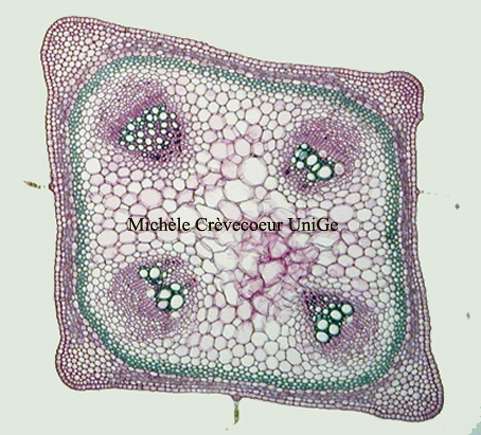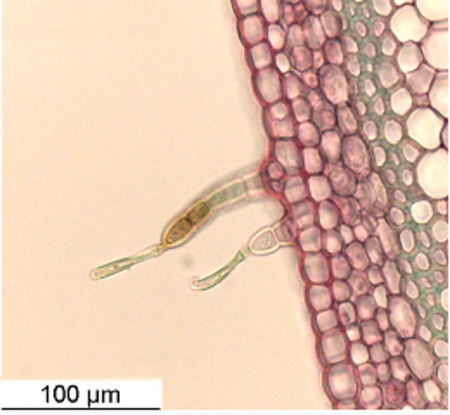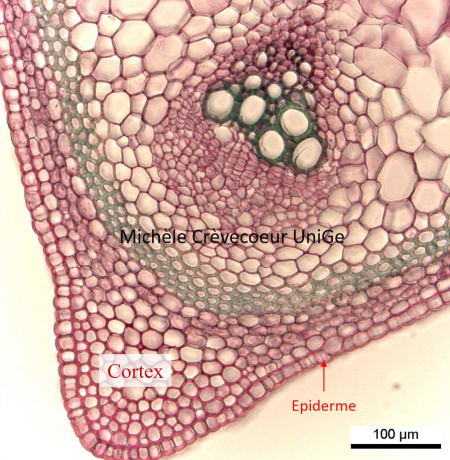Cross section through Aristolochia rotunda stem
The Latin name of the species rotunda, Aristolochia with round leaves, refers to the form of the leaves which allow to differentiate from Aristolochia pistolochia characterized by triangular leaves with dentate borders. The leaves are sessile e.g., directly attached to the stem without petiole.
This herbaceous plant is common in Mediterranean regions and in France it is found in Herault and south of Drôme where if forms colonies on slopes.
In this section stained with carmin – green iodide tissues with cellulosic cell walls are pink and tissues with lignified cell walls are green.

General aspect of the cross section: we note 4 vascular bundles distrbuted on a single ring in the pith (medular parenchyma) and a few layers of cells stained in green forming a ring at the inner limit of the cortex on the whole section. The central part of the section is constituted of larger parenchyma cells.

Detail of epidermis, a monolayer of tight cells with a thin cuticle. Twon non glandular trichomes that are extensions of some epidermic cells are also observed.

On the left portion of the sections with different tissues from outside towards inside : epidermis; the cortex that consists of parenchyma named cortical parenchyma ; 2 to 3 layers of cells with thick cell walls stained green that correspond to sclerenchyma (fibers) and a vascular bundle (detail on this page).
Characteristics of this section : vascular bundles (4 in this stem) on a single ring, xylem and phloem superposed with xylem towards the center and phloem towards the periphery; important pith and reduced cortex. There are all characteristics of a young dicotyledon stem.
Cambium is present between xylem and phloem but secondary vascular tissues are not yet present.